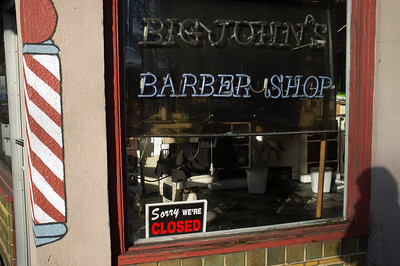Kalamazoo Valley Community College held a ribbon-cutting ceremony for its new School of Cosmetology and Barbering. KVCC will enroll its first class in the fall. The facility has 10,000 feet of classroom space and will offer programs in barbering, cosmetology, and will also offer an esthetician certificate. All of these are low wage programs.
According to the school, it initiated the programs based on community need and inquiries from students. The problem with honoring those requests is that the average starting salary for a barber in Michigan is less than $18 per hour ($37,450/year). A hair stylist can do somewhat better- at $21.00 per hour ($44,200/year). An esthetician can pull in a starting salary of $18.50 per hour ($38,500).
Regardless of the need, these jobs don’t pay enough to allow individuals to make ends meet. And this isn’t just my assessment. In 2021, the National Center for Education Statistics found that cosmetology programs were both costly to operate and tended to leave students with substantial student loan debt.
“Cosmetology school is expensive, time consuming, it’s risky, it rarely pays off in terms of earnings,” Michael Bednarczuk, one of the authors of the study, told Yahoo Finance. “These findings suggest the current system of cosmetology licensing is a failed model of professional development and mainly serves to transfer wealth from students and taxpayers to cosmetology schools.”
Ouch.
Additionally, about one-third of cosmetology programs failed to graduate any enrolled students “on-time.” That means students spent even more time and money trying to complete a program that will prepare them to earn a below-average income.
Community colleges need to eliminate low wage programs
KVCC may have determined that the community needed training programs for barbers and cosmetologists after the closure of the West Michigan College of Barbering and Beauty, which closed in 2022. The average starting salary for graduates of that facility was $22,465, with annual average federal financial aid of $11,100.
Community colleges might be better situated to offer these programs – most are offered by private, for-profit schools – but that doesn’t mitigate the income problem for these students. Community colleges should not be investing public resources into training facilities that commit students to long hours, low wages, extreme physical demands, and high student loan debts.
We need community colleges to be diligent in program development. Our community colleges should prepare people for living wage careers. They should not commit time, effort, space, and resources to programs that cannot deliver a living wage to graduates.
I applaud KVCC for trying to address the needs of the community, but those actions cannot come at the expense of the students it hopes to enroll. The decision to commit resources to program development should include an exhaustive examination of not only the benefit to the community but also the benefit to the students. I have said before that it is simply bad public policy to use public dollars to train people for low wage work. If an academic program cannot both address the needs of the community and lead to just compensation for the graduates, then it should have no place at a publicly funded higher education institution.
Photo Credit: Bari Bookout , via Flickr

















